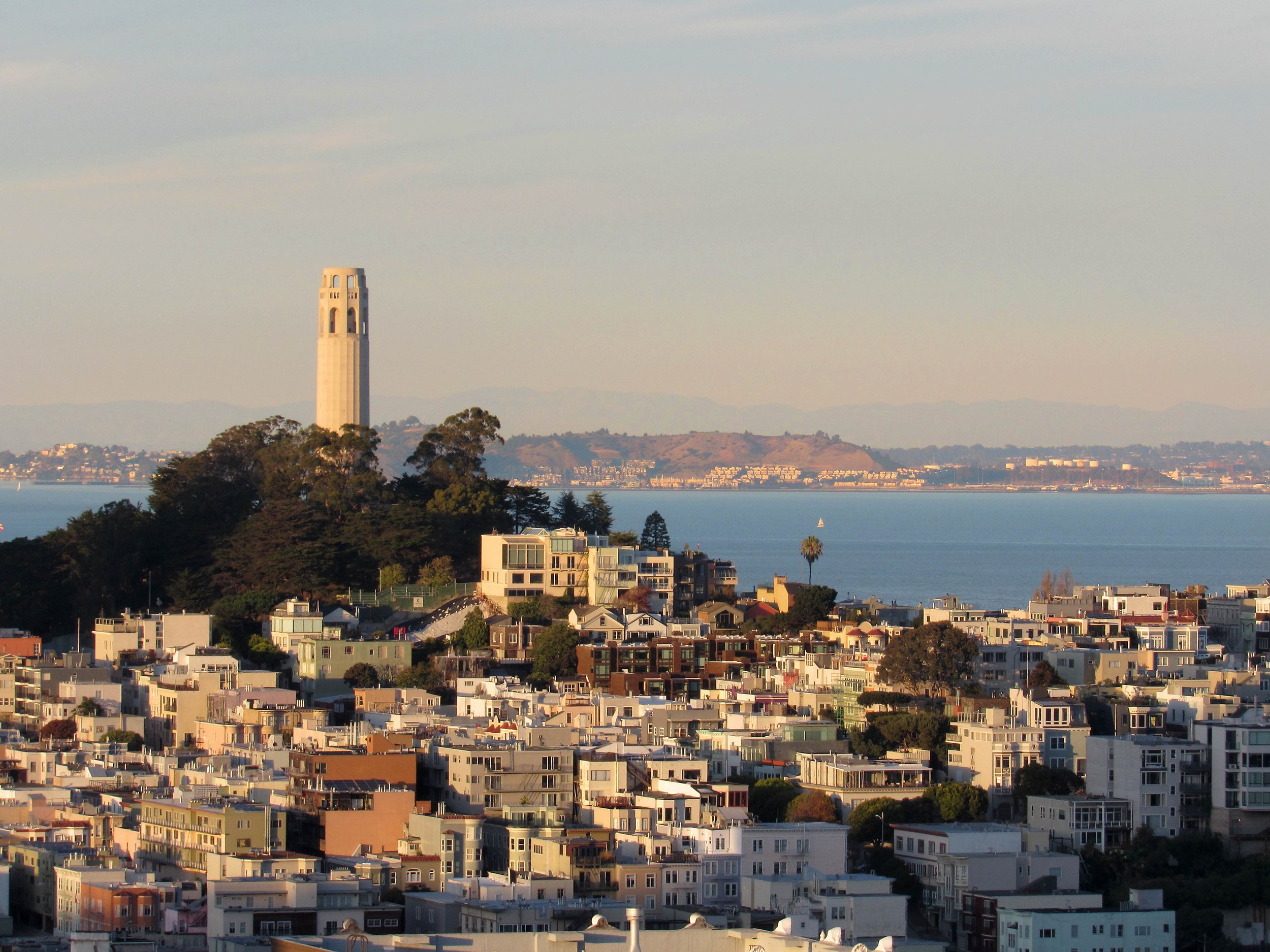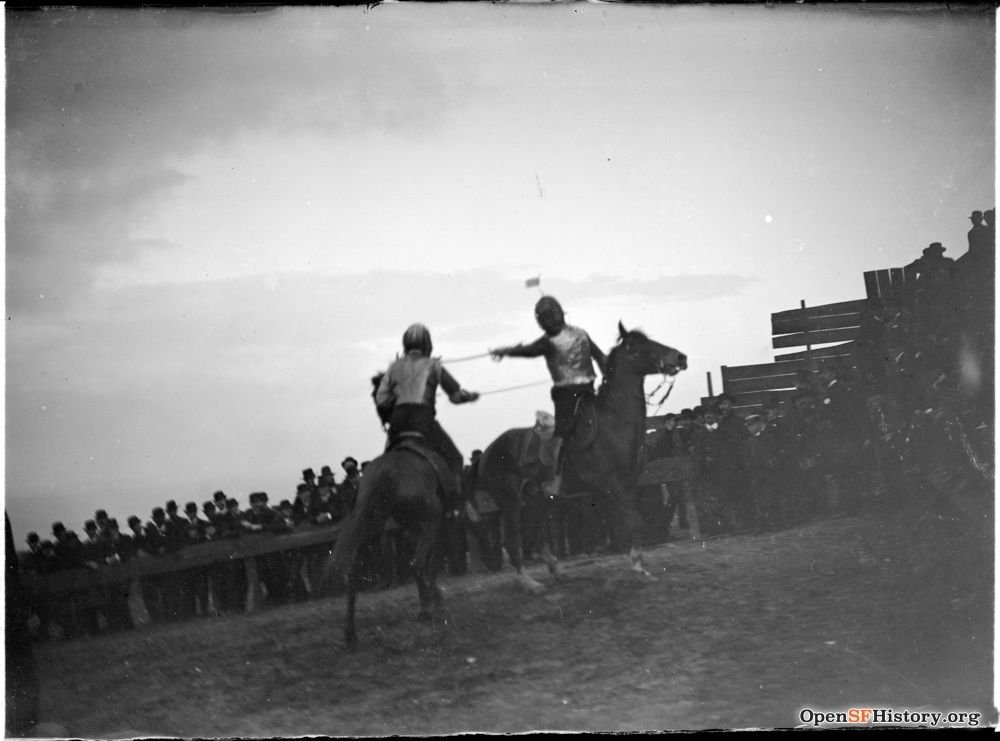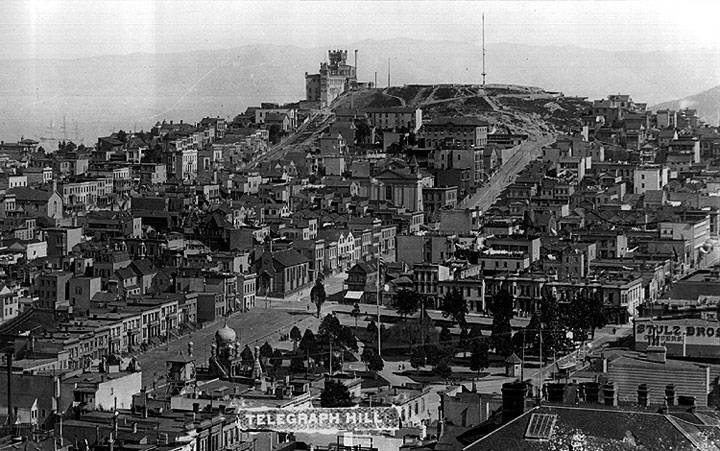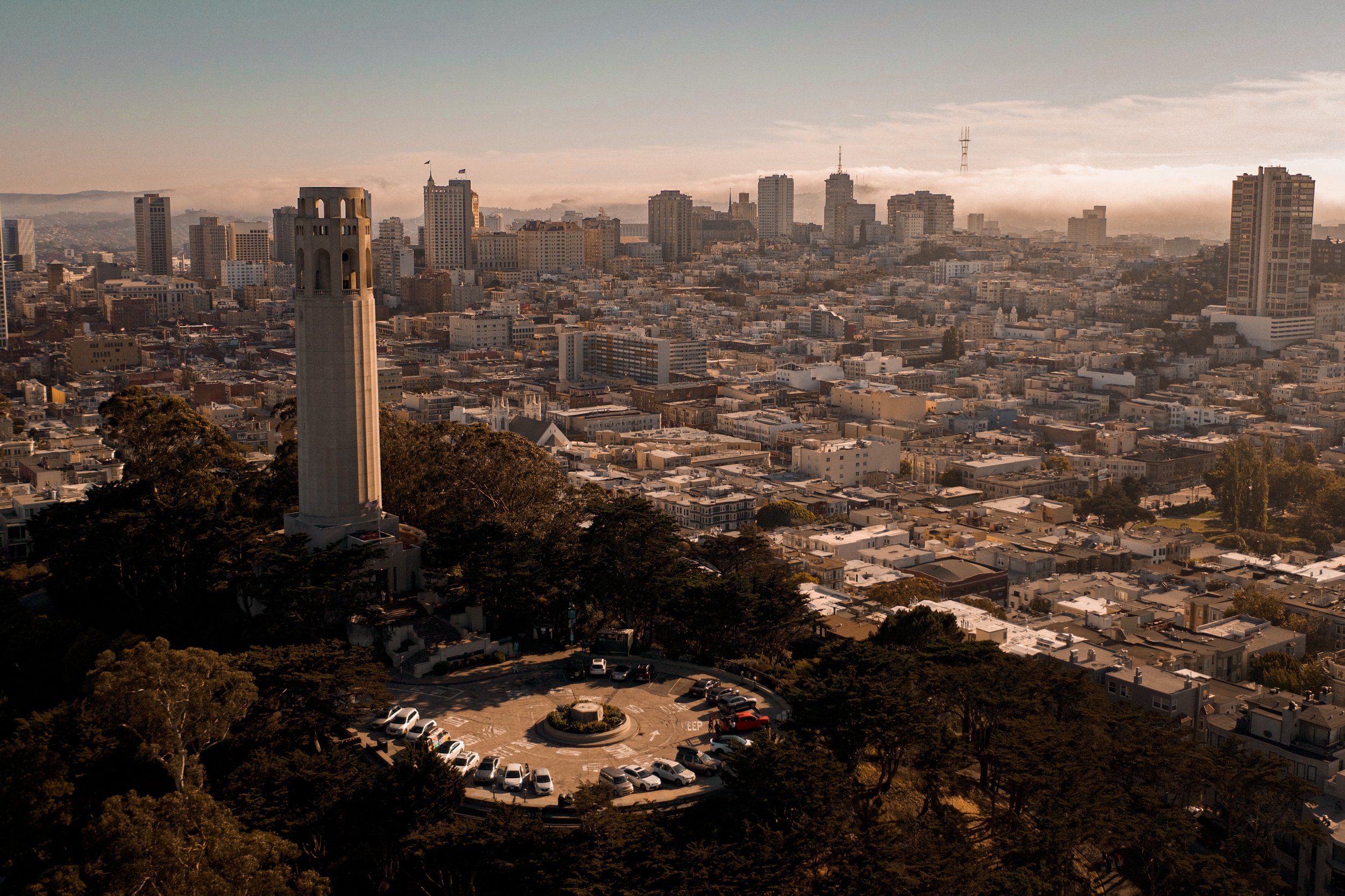
Pioneer Park
Pioneer Park, the five-acre park that surrounds Coit Tower, was created as a result of a great storm. In 1870, torrential rain and high winds destroyed the old signal station at the summit of Telegraph Hill, leaving four hilltop lots vacant. Concerned that some non-civic-minded person would buy the historic site, in 1876 a group of businessmen purchased the land and donated it to the city, stipulating that it be maintained forever as a public park.
They named it Pioneer Park.
A Park Known for its Castle
However, it took a long time for the park to assume anything like its present form. Its first attraction was a German castle erected in 1882 by an entrepreneur named Frederick Layman, which was reached by a short-lived cable car line that ran up Greenwich Street. This castle featured one of the oddest and most dangerous entertainments in the city’s history: mounted broadsword fights, in which armored contestants would hack at each other with swords. The city’s appetite for medieval combat soon subsided, and the castle fell into decline, gaining a reputation as a “hoodlum resort” and becoming known as “Layman’s Folly.” It burned down in 1903.



A Quarry’s Transformation
Meanwhile, two rogue quarrymen, the Gray brothers, were illegally blasting away at the eastern side of Telegraph Hill, creating its sheer eastern face and threatening to level the entire hill. The land donated for Pioneer Park languished in a mostly undeveloped state for decades. It was not until Telegraph Hill Boulevard was constructed in the 1920s, and Coit Tower erected in 1933, that the park came to resemble its present form. One of its most pleasant and notable features is the verdant walkway that runs along the western side of Coit Tower, ending at an ornamental landing above a grand stairway running down to Lombard Street.

After protests and vandalism erupted in Golden Gate Park, the city removed the statue.

